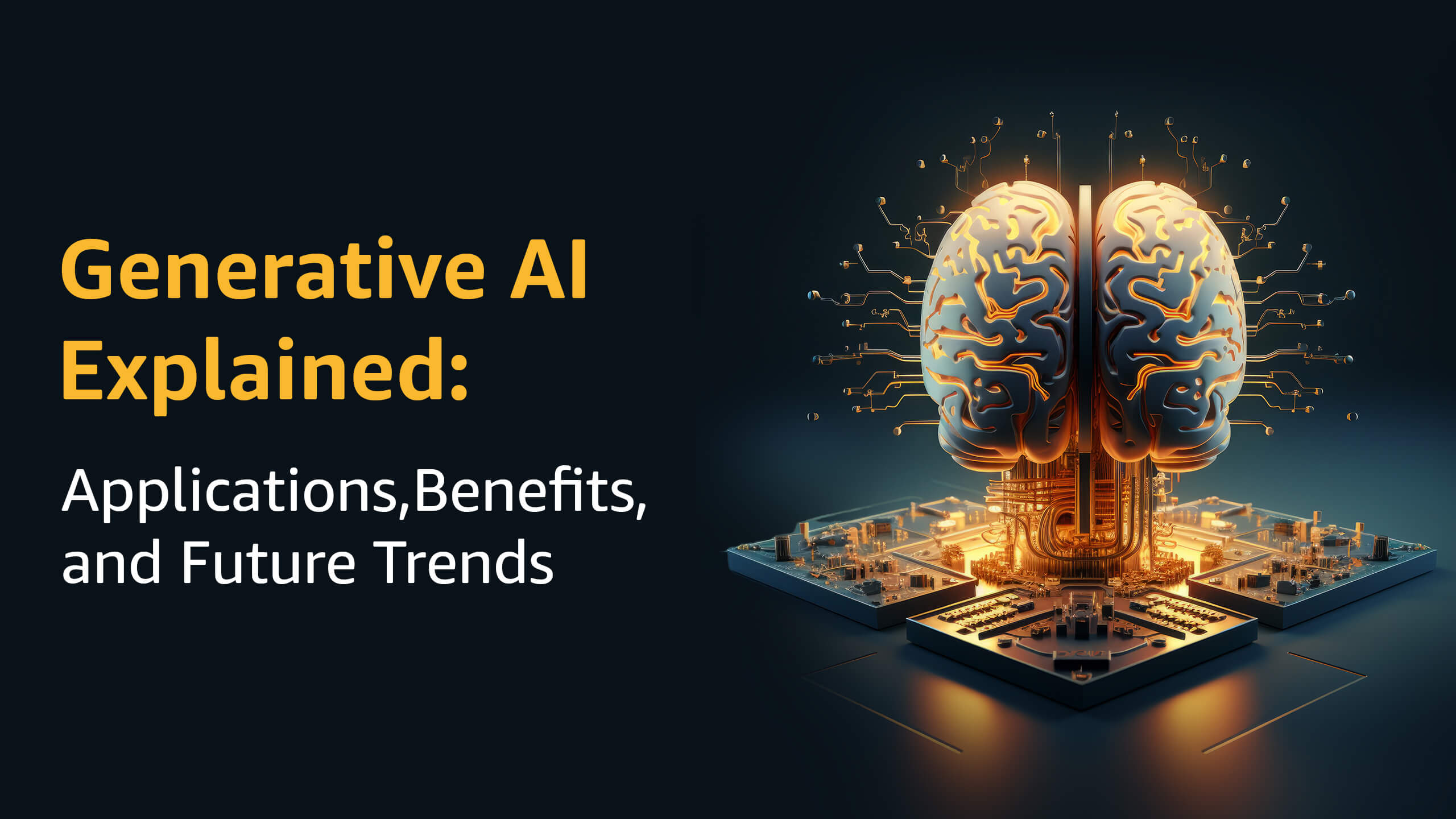Introduction to Generative AI
Generative AI, a branch of artificial intelligence (AI), has taken the world by storm with its ability to create entirely new and original content. But what exactly is it? Let’s delve deeper into this fascinating technology.
At its heart, generative AI utilizes machine learning algorithms to analyze vast amounts of data and extract hidden patterns. This data can encompass text, code, images, audio, and more. By studying these patterns, the AI model learns the underlying rules and relationships within the data.
Once the generative AI model has absorbed the knowledge from the training data, it can use this expertise to generate entirely new content. This content can take various forms, including:
- Text: Imagine AI-powered content creation tools that can generate realistic news articles, scripts, poems, or even code!
- Images: Generative AI can create brand-new images or manipulate existing ones, opening doors for innovative design and marketing possibilities.
- Audio: The ability to generate new music or audio effects can revolutionize the creative landscape.
How Does Generative AI Work?
Generative AI leverages the power of neural networks to create entirely new content. Here’s a simplified breakdown of the process:
- Data Feeding Frenzy: Generative AI models are trained on massive amounts of data, which can be text, code, images, audio, or even a combination.
- Pattern Recognition Powerhouse: Neural networks within the model analyze this data, identifying underlying patterns and relationships.
- The Art of Content Creation: Once trained, the model uses this acquired knowledge to generate new, original content that closely resembles the data it was trained on. This can be anything from creating realistic images to composing novel pieces of music.
Benefits of Using Generative AI
Generative AI offers a wide range of advantages that can transform various industries. Here are some of the key benefits:
- Enhanced Creativity and Content Generation: It can assist with content creation by sparking new ideas, developing drafts, or composing different creative text formats. This can be a boon for agencies, marketers, and even individuals looking to overcome writer’s block.
- Increased Efficiency and Productivity: Repetitive tasks can be automated using generative AI, freeing up human resources for more strategic endeavors. For instance, it can automate content generation for social media or product descriptions.
- Improved Personalization: It can analyze customer data to personalize interactions and provide more tailored content or recommendations. This can lead to enhanced customer satisfaction and loyalty.
- Data Analysis and Discovery: It can analyze vast amounts of data to identify patterns and trends that might be missed by humans. This can be valuable for research, drug discovery, and other fields.
- New Product Development and Design: It can be used to design entirely new products or generate innovative variations of existing ones. This can accelerate product development cycles and lead to more creative solutions.
Examples of Generative AI Tools
Generative AI is a rapidly evolving field, and there are many tools available that cater to different needs. Here are a few examples across various functionalities:
- Text Generation: Tools like GPT-4, Bard, and ChatGPT can generate different creative text formats, articles, blog posts, product descriptions, and even summaries of written content.
- Image Generation: DALL-E 2 and Midjourney are examples of generative AI tools that can create realistic images and art from scratch or modify existing ones.
- Code Generation: GitHub Copilot and AlphaCode are examples of AI tools that can assist programmers by generating code snippets or suggesting entire functions.
- Audio Generation: Jukebox by OpenAI is an example of a tool that can generate music in various styles.
This is not an exhaustive list, but it gives you a glimpse into the diverse applications of generative AI tools that are transforming various industries.
The Future of Generative AI
The future of generative AI is predicted to be transformative across various sectors, with advancements in several areas:
- Increased Productivity and Efficiency: It is expected to significantly boost labor productivity by automating repetitive tasks and assisting human workers.
- Enhanced Creativity and Content Generation: It will likely play an even bigger role in creative fields, assisting with tasks like design, music composition, and content writing, allowing humans to focus on strategic aspects.
- More Realistic Outputs: Generative models are expected to create even more realistic and nuanced outputs, including images, videos, and text formats, blurring the lines between human-generated and AI-generated content.
- Integration with Other Technologies: It is likely to be integrated with other AI advancements like natural language processing, leading to a new wave of intelligent applications.
Overall, generative AI holds immense potential to reshape our world by making tasks more efficient, boosting creativity, and potentially leading to new discoveries and applications.




